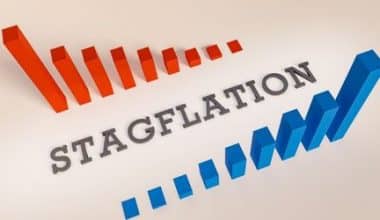There are dishonest people out there who submit fake resumes to get a foot in the door at some of the most competitive companies. How to fake a resume and how to spot them are topics we’ll cover in this post so that businesses may keep their hiring processes honest.
Fake Resume
There is a deluge of resumes sent to businesses in today’s competitive employment market. The unfortunate consequence of this is that some applicants may feel pressured to exaggerate their skills and experience to acquire the job. This is known as forging a resume, and if caught by an employer, it can lead to severe penalties. The degree to which a resume is fraudulent can vary from slight inaccuracies or omissions to outright falsification of credentials and work history. Either way, if a candidate or employer employs someone based on inaccurate material on their CV, it could lead to legal consequences.
Fake Resumes: How They Affect Hiring Managers and Candidates
Many people are turning to dishonest means, such as creating fake resumes, to get their ideal job in today’s competitive job market. Falsifying job experience or education on a resume is dishonest and may get you in trouble. Someone might make a false claim about their qualifications or experience if they, for instance, embellish their prior job titles or duties, fabricate their educational background, or invent a job history that doesn’t exist.
What Are the Negative Effects of Fake Resumes?
- Prospective employees who exaggerate their qualifications may take advantage of employers. Due to unfulfilled expectations, this may cause subpar performance, missed deadlines, and reduced customer satisfaction. Also, it could cause costly legal obligations if found out after the applicant has already been hired, which is later in the hiring process.
- If a job applicant submits a fraudulent CV, it could lead to severe repercussions, including criminal charges or even a loss of reputation. Furthermore, their credibility will have been ruined, which could hurt their prospects of being considered for future posts.
- At the end of the day, resumes that aren’t authentic can level the playing field so that dishonest candidates don’t have an unfair advantage. Companies must verify educational qualifications and perform background checks during the recruiting process to guarantee that all candidates are evaluated fairly.
Characteristics of a False Resume
Applicants may try to trick companies by submitting one of numerous forms of false resumes. These might vary from minor embellishments or missing details to outright fabrications like fabricated credentials, work history, or references. Some candidates may even go to extreme lengths, including forging transcripts and certificates, to back up their statements. Before making a hiring decision, companies should be vigilant about this kind of thing and make sure that candidates’ claims are true.
How to Fake Resume
Making a Phoney Resume. Though you’re interested in that ideal career, you’re not quite qualified for it. Every time you send in your résumé, all you ever get is a generic rejection letter. Perhaps you could stand out from the competition with a revised CV. Perhaps it might benefit from a fresh perspective. Realize that there are hiring supervisors who believe all resumes are embellished to some extent. Although this could be seen as an excuse to falsify a résumé, it is nonetheless a fact. Because the person reviewing the CV might suspect that it is slightly exaggerated, even if the applicant is being truthful, they will already be at a disadvantage.
Process of Forging
The process of forging a resume is as follows:
#1. Keep to What You’re Good At.
If you just have a year of experience in a given industry, for example, you should list two or three years instead. A word of caution, though: you should never boast about abilities you lack.
#2. Revise the Information That Can Be Personally Confirmed.
For instance, just because someone else checked your GPA doesn’t mean you can alter it. You should only make changes to information that no one else can confirm.
#3. Personalize Small Items.
Put yourself down as the department head if you were in charge of two other employees. It was your responsibility to oversee inventory if you were responsible for purchasing stationery for your department. Put your creative cap on.
#4. Get an Individual You Know to Be a Reference for You.
Since they will be fielding calls on behalf of the listed corporation, this individual must be reliable. Additionally, they should be able to persuade the HR representative over the phone that they are a genuine reference for the position. The situation will be even more favourable if your loved one has a secretary and works for a prestigious firm.
#5. Personalize Every Application for a Job.
Take a close look at all of the necessary qualifications and reasonably include them in your resume. Truth must always lie at the heart of a good lie. Stop acting like you do if you lack the necessary abilities.
You would like to highlight your abilities and successes from past jobs to prospective employers, but you are concerned that including every one of your jobs may give the impression that you aren’t loyal or committed. Mastering the functional resume structure will help you showcase your skills while minimizing job changes.
#1. The Objective and Header
A functional resume, like any other type of resume, should have your contact details and/or be printed on letterhead. Be sure to include your complete name, mailing address, phone number, email address, and, if relevant, a link to your website or an online resume. Make a brief statement outlining your goals or objectives. If you want to wow potential employers with your one- or two-sentence statement, make sure it’s tailored to the job you’re looking for. To put people at ease regarding your extensive work history, you might want to mention that you are looking for a long-term role.
#2. Required Skills
In a functional resume, the Qualifications section takes center stage, as opposed to the chronological resume format, which presents your previous roles in chronological order. Pick out three or five of your greatest strengths that are relevant to the job you’re applying for. In the Qualifications section, under each skill heading, provide two or three bulleted instances of when you used that skill to complete a task or fulfill a responsibility.
#3. Work History
You should still include your prior jobs and roles on a functional resume, even though they are not prominently presented. This will help a hiring manager learn more about your experience. Include your most recent three to five years of work experience in chronological order under the “Experience” section. It is unnecessary to elaborate on the nature of the work you did, as you have already mentioned your qualifications. Put your name, job title, and dates of employment next to the name of the company.
#4. Supplements
You can add brief sections to the conclusion of your resume to convey additional information, such as relevant degrees, academic awards, unique coursework, professional development, affiliations, skills, and references. The emphasis will be shifted away from lengthy work history and onto anything that highlights your dedication or sets you apart from other candidates, allowing a prospective employer to see you in the best light.
How to Spot a Fake Resume
Candidates are getting better at creating fake resumes, so companies need to spot them early on in the hiring process. In addition to reducing the company’s recruiting expenses, a thorough background check is the best method for detecting false or misleading information.
Job experience, educational background, and pay information are the most common areas where people inflate their resumes. Claims and accomplishments may also be embellished.
When reviewing resumes, there are five important factors to keep in mind:
#1. Fabricated Education Credentials
False candidates often omit or conceal the year of graduation from their stated educational requirements. In most cases, his or her greatest level of education is an attempt to give the impression of having more relevant work experience than exists. False degrees, diplomas, certifications, and experience letters are available from a variety of sources, including legitimate universities and organizations. So, one way to spot a fake resume is to look for references to reputable institutions.
#2. Scant Employment History
Some individuals offer very little information about their career history on their resumes, such as six years of experience in the information technology sector (without specifying the tasks or responsibilities held during that time). Verifying if the name and address of the business he gave are the same is another option. The location might not always be associated with the company, and vice versa.
#4. The Use of Words
An honest applicant would introduce himself and engagingly state his professional goals at the top of their profile. In contrast, a phony candidate might employ carefully crafted language in his profile. A fake resume would be too generalized and full of flowery language, with no mention of relevant experience or skills.
Checking the candidate’s social media pages is another way to spot a fake resume. A new method of doing background checks that involves analyzing and comparing a candidate’s social media accounts to their credentials is also gaining traction.
#6. Double-Check
The gold standard for evaluating a resume is, of course, a direct discussion with the applicant followed by a thorough assessment of their credentials.
It doesn’t take much more than common sense, focus, and an eye for detail to spot a fake resume. Reason and logic are also important qualities in a recruiter. Do not hesitate to ask the candidate to clarify or provide further evidence if you have any reservations about the information they have provided. Last but not least, rely on your instincts and your experience.
What Is CV or Resume?
The curriculum vitae (CV) details your entire academic background; hence, its length can vary. Resumes, on the other hand, are typically shorter since they just give a brief overview of your relevant experience and education for a given job.
How Do I Make My Resume Original?
Most people use the chronological format, which also goes by the name reverse-chronological, to highlight their employment history on their resume. For those making a career change or seeking employment for the first time, a functional resume structure that emphasizes talents above job experience is ideal.
How Do You Spoof a Resume?
Falsifying your educational background, exaggerating your professional experience, giving false references, and claiming to have earned a certification or degree when you haven’t are all hallmarks of a phony resume.
What Does a CV Look Like?
An effective curriculum vitae (CV) will have sections for your contact information, an introduction, your academic background, your employment experience, and references.
Can I Make My Own Resume?
A resume template might make the process of creating a resume much easier, but you can also use a word processor to create your resume. Using these as a starting point, you can easily create a fully-formed document by filling in the appropriate fields with your data.
How Do I Make a Resume on My Phone?
To format your resume, use a free tool like Firstnaukri. Make your selection of a template and fill it up with your details, including your education, employment history, and talents. Be sure to save it as a PDF and proofread it completely before sharing.
- Beyond Employee Records: Enhancing Business Security with Background Check
- FAKE RESUME: How To Generate Fake Resume
- RESUME WRITING: What It Should Look Like and Easy Guide to Make One






